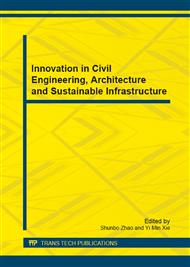[1]
S. Li, M. Su, Optimal thermo-economic synthesis design of heat piping, Journal of Chemical Industry and Engineering, 53 (2002) 842-846.
Google Scholar
[2]
D. Dobersek, D. Goricanec, Optimization of tree path pipe network with nonlinear optimization method, Applied Thermal Engineering, 29 (2009) 1584–1591.
DOI: 10.1016/j.applthermaleng.2008.07.017
Google Scholar
[3]
N. Yildirim, M. Toksoy, G. Gokcen, Piping network design of geothermal district heating systems: Case study for a university campus, Energy, 35 (2010) 3256-3262.
DOI: 10.1016/j.energy.2010.04.009
Google Scholar
[4]
H. I. Tol, S. Svendsen, Improving the dimensioning of piping networks and network layouts in low-energy district heating systems connected to low-energy buildings: A case study in Roskilde, Denmark, Energy, 38 (2012) 276-290.
DOI: 10.1016/j.energy.2011.12.002
Google Scholar
[5]
Y. Kalinci, A. Hepbasli, I. Tavman, Determination of optimum pipe diameter along with energetic and exergetic evaluation of geothermal district heating system modeling and application, Energy and Buildings, 40 (2008) 742–755.
DOI: 10.1016/j.enbuild.2007.05.009
Google Scholar
[6]
X. Li, D. Lin, H. Shu, Optimal design of district heating and cooling pipe network of seawater-source heat pump, Energy and Buildings, 42 (2010) 100–104.
DOI: 10.1016/j.enbuild.2009.07.016
Google Scholar
[7]
M. Wang, H. Xiong, Y. Wang, Optimal design method of heating pipe diameter based on life cycle, HV&AC, 41 (2011) 44–47.
Google Scholar
[8]
X. Fu. Fluid Transmission and Distribution Network, second edit., China Building Industry Press, Beijing, (2006).
Google Scholar


